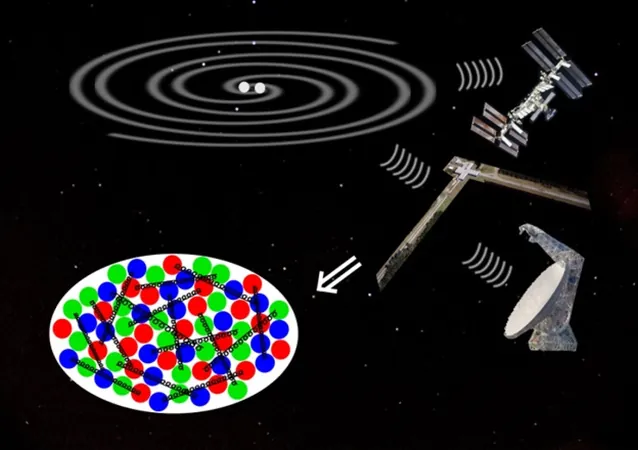
Groundbreaking Neutron Star Research Sheds Light on Color Superconductivity in Quark Matter!
2025-01-14
Author: Jia
Introduction
In an astonishing breakthrough for astrophysics, scientists have confirmed that the densest visible matter in the universe—neutron stars—holds the key to understanding the mysterious behavior of quarks under extreme conditions. At extremely high densities, quarks are anticipated to form pairs, similar to how electrons behave in superconductors. This phenomenon is known as color superconductivity. However, determining the strength of these pairings has been a complex challenge for researchers.
Recent Study Highlights
A recent study published in the journal *Physical Review Letters* marks a pivotal moment in this field of research. By examining neutron star observations, scientists were able to deduce the properties of quark matter at even higher densities, where it is inevitable that color superconductivity plays a role. This groundbreaking work provides the first empirical upper limit on the strength of pairing in color superconductors, advancing our understanding of these elusive particles.
Innovative Measurement Techniques
Utilizing advanced measurements from the Neutron Star Interior Composition Explorer (NICER), the groundbreaking LIGO/Virgo gravitational wave observatories, and other radio telescopes, researchers have gathered vast amounts of data regarding the pressures and densities at the cores of various neutron stars. Each measurement comes with its own uncertainties, leading scientists to conduct a comprehensive statistical analysis to better grasp the potential pressures within these exotic environments.
Theoretical Understanding vs. Empirical Data
Interestingly, scientists possess a theoretical understanding of what quark matter's pressure should be at these extreme densities, absent any pairing effects. By examining the deviations from this baseline, the researchers were able to quantify the impact of color superconductivity. Their findings have unveiled a range of possible pairing effects consistent with neutron star observations, providing empirical bounds on the strength of color superconducting pairing for the first time.
Significance of the Research
For over two decades, theoretical physicists have pondered the complexities of color superconductivity; however, the connection to real-world data from neutron stars is revolutionary. This research not only establishes a new empirical foundation for future studies but also opens up a dynamic research frontier where astrophysics meets particle physics.
Future Implications
As scientists continue to explore the core of neutron stars, the findings hold the potential to reshape our understanding of fundamental physics. What secrets about quark matter and the universe await further exploration? Only time—and continued studies—will tell!
 Brasil (PT)
Brasil (PT)
 Canada (EN)
Canada (EN)
 Chile (ES)
Chile (ES)
 Česko (CS)
Česko (CS)
 대한민국 (KO)
대한민국 (KO)
 España (ES)
España (ES)
 France (FR)
France (FR)
 Hong Kong (EN)
Hong Kong (EN)
 Italia (IT)
Italia (IT)
 日本 (JA)
日本 (JA)
 Magyarország (HU)
Magyarország (HU)
 Norge (NO)
Norge (NO)
 Polska (PL)
Polska (PL)
 Schweiz (DE)
Schweiz (DE)
 Singapore (EN)
Singapore (EN)
 Sverige (SV)
Sverige (SV)
 Suomi (FI)
Suomi (FI)
 Türkiye (TR)
Türkiye (TR)
 الإمارات العربية المتحدة (AR)
الإمارات العربية المتحدة (AR)